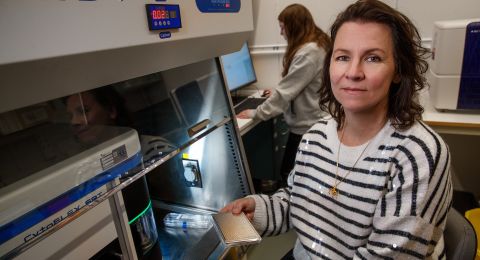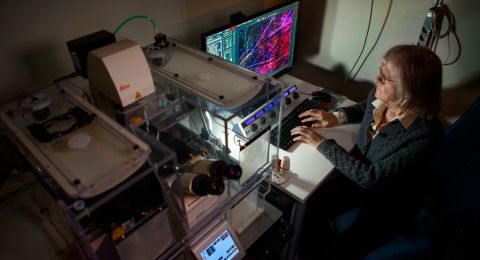
Strategic Grants
WIRM
Wallenberg Institute for Regenerative Medicine
WIRM can be seen as a bridge between Karolinska Institutet's clinical research and the basic research in regenerative medicine and stem-cell research.
Homepage
www.wirmki.se
Grant in SEK:
SEK 100 million
Research groups:
Urban Lendahl
Notch signaling and its function for gene regulation and differentiation of embryonic stem cells.
Eva Hellström-Lindberg
About the blood disease myelodysplastic syndrome.
Katarina Le Blanc
About support cells and the communication between blood-forming cells and others.
Hong Qian
About how bone marrow cells protect stem cells.
Robert Månsson
About B cells, one of the most important parts of the immune system.
Julian Walfridsson
Studies the origins of leukemia and identifies new genes important to leukemia.
“The premise for the activities is to understand how the blood system is formed and what goes wrong in a number of diseases,” says Professor Urban Lendahl, Director of Research at WIRM.
A focus area is the further development of bone-marrow transplantation as a method for diseases that cannot be treated today.
The center began in the summer of 2010 after Karolinska Institutet (KI) was awarded a grant of SEK 100 million from the Knut and Alice Wallenberg Foundation.
“We have also received considerable help from the Stockholm County Council and KI,” emphasizes Lendahl.
“WIRM can be seen as a bridge between Karolinska Institutet's clinical research and the basic research in regenerative medicine and stem-cell research.
Basically, one can say that we are active in an area where we want to replace sick cells with healthy, new cells,” explains Urban Lendahl.
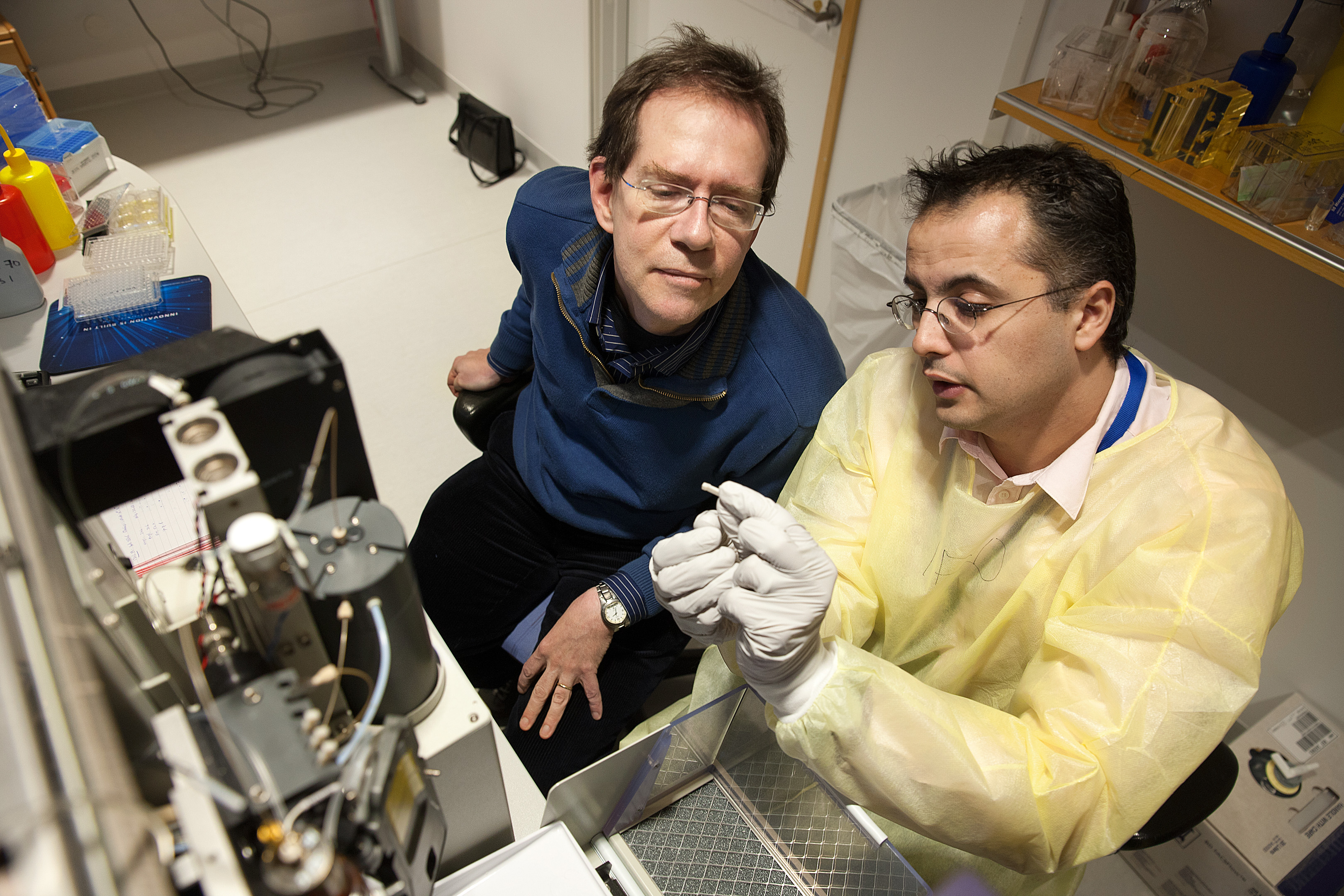
Focus on immature cells
One regenerative treatment that has long been applied is bone-marrow transplantation for leukemia, where the patient's own sick cells are first depleted and new, immature stem cells are transplanted to the patient.
“Diabetes and neurodegenerative diseases such as Parkinson's are other disorders that are on the wish list for regenerative medicine.”
Stem cells have the potential to be developed into a number of different specialized cell types.
“Through research on mice, it has been possible to see that it is enough to move an immature cell from the bone marrow of one mouse to another mouse to form the entire blood system. There is an incredible amount to learn in the field and this is the objective of WIRM,” confirms Urban Lendahl.
Life-saving method
Eva Hellström-Lindberg is a Professor of Hematology, Senior Physician and Director of Research for HERM, a center formation for hematology and regenerative medicine at KI. The HERM center cooperates closely with WIRM and four research teams from HERM are included in WIRM. She hopes that WIRM's research will be able to contribute to new treatments and potential medicines.
“The objective is to find good treatments for the diseases that do not have them today. Everyone who receives a transplant is not cured. We have to find new methods that extend life and improve quality of life.”
An important piece of the puzzle is also the research conducted by Katarina Le Blanc's research team.
“The team is focused on support cells and the communication between blood-forming cells and other cells. Katarina is a pioneer who has saved lives through a new method that reduces the risk of rejection in transplantation,” says Eva Hellström-Lindberg.
Leading experts
Diseases of anemia that are due to too few white blood cells are another area that the researchers at WIRM study.
“We are just beginning to understand the blood system. We do not know, for instance, how the body regulates the system so that a proper amount of white and red blood cells are formed.”
One of several significant recruitments that WIRM was able to do is Professor Sten Eirik Jacobsen, who was recruited as a visiting professor at WIRM.
“He is a world-leading expert on how the blood system is formed. Besides his own research, he is a very important discussion partner and we are very happy that he spends 25% of his time with us,” says Urban Lendahl.
In total, WIRM consists of seven research groups, four of which are newly recruited to Karolinska Institutet. Stem-cell researchers and those who study diseases or different forms of cell therapy constitute the majority of the researchers.
Beneficial conditions
The patient samples that have been gathered in a biobank over a long period of time form an important base in the research. Together with the advanced technical equipment at the center, they are a prerequisite for the development of the research.
“We have built up a platform with the most advance technology available in the gene and molecular field. This includes the ability to sort out cells using FACS technology. This combined with powerful model systems and a rich patient material entails a significant reinforcement of the basic research and means that we can answer new questions,” confirms Urban Lendahl.
All research groups have joint access to the technical equipment.
“It is important to create an open culture without territorial thinking,” says Eva Hellström-Lindberg, who is also the head of the lab.
Zebrafish increase the pace
Other important facilities make it possible to cultivate large amounts of cells that can be returned to patients and there is also equipment to reverse cells in their development. WIRM has also strengthened the possibility of cultivating transgenic mice and has a model system at its disposal comprised of zebrafish.
“It can take six months to see what effects various experiments have on mice while the same results are achieved in three days if zebrafish are used. There are also other advantages,” explains Eva Hellström-Lindberg.
Eva and Urban represent two different, supplemental research emphases at WIRM.
Eva Hellström-Lindberg maps molecular mechanisms and problem cells and tries to understand how they are developed. Her research is focused on the leukemia disease myelodysplastic syndrome, MDS.
Urban Lendahl is a stem-cell researcher and focuses on understanding processes of how stem cells work and mature in different organ systems, including the central nervous system and the bone marrow, where the few blood stem cells are.
Together, they are convinced that the translational research - a close cooperation between basic research and clinical research - of which they and all of WIRM are examples, will yield results.
Text Carina Dahlberg
Translation Semantix
Photo Magnus Bergström
